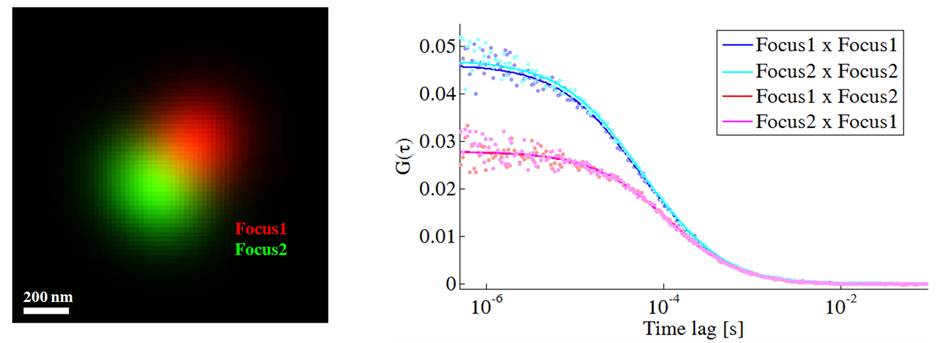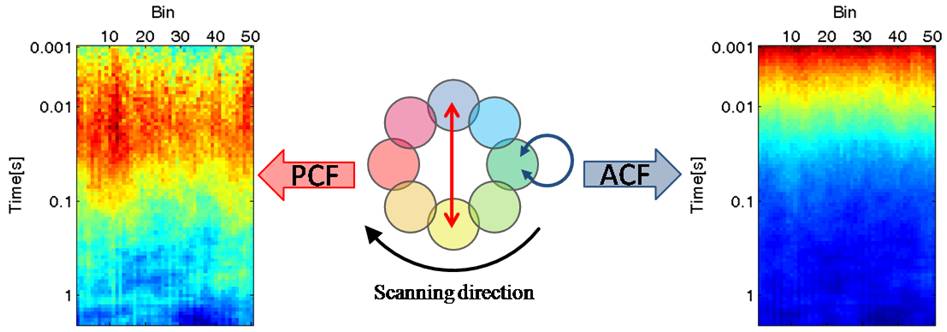2-Focus FCS
One aspect of FCS that complicates quantitative measurements of diffusion coefficients is the fact that changes of focus size
(due to changes in reflective index, alignment, etc.) are indistinguishable from changes in diffusion coefficient (due to interactions, etc.),
requiring minute calibrations.
One way to make the measurements more stable and precise is by introducing a second focus (usually via a nomarski prism).
The separation of the foci is very stable and easy to calibrate. By introducing this new parameter the focus size and diffusion coefficient can be fitted simultaneously.

- Dertinger, Thomas, et al. "Two-focus fluorescence correlation spectroscopy: A new tool for accurate and absolute diffusion measurements." ChemPhysChem 8.3 (2007): 433-443.
Fluorescence Pair Correlation
Due to the symmetric shape of the confocal spot, FCS only allows one to collect information about local conditions and no details of
directional flows can be extracted. For in vitro measurements this is not a problem or is even desired. But for structured samples or
active transport, the assumption of homogeneous and isotropic diffusion is no longer valid.
Scanning enables one to measure at several points at the same time and to compare results of the different locations. Since the maximum
time resolution depends on the scanning frequency, fast sampling (ca. 1-10 kHz) of simple patterns (like a line or a circle) is
required. Moreover, pair-wise cross-correlation of signals from different locations yields more detailed information about the sample. Since
the results now contain spatial information, measurement of velocities and directions of flows and active transport are available.

- Digman, Michelle A., et al. "Imaging barriers to diffusion by pair correlation functions." Biophysical Journal 97.2 (2009): 665-673.
